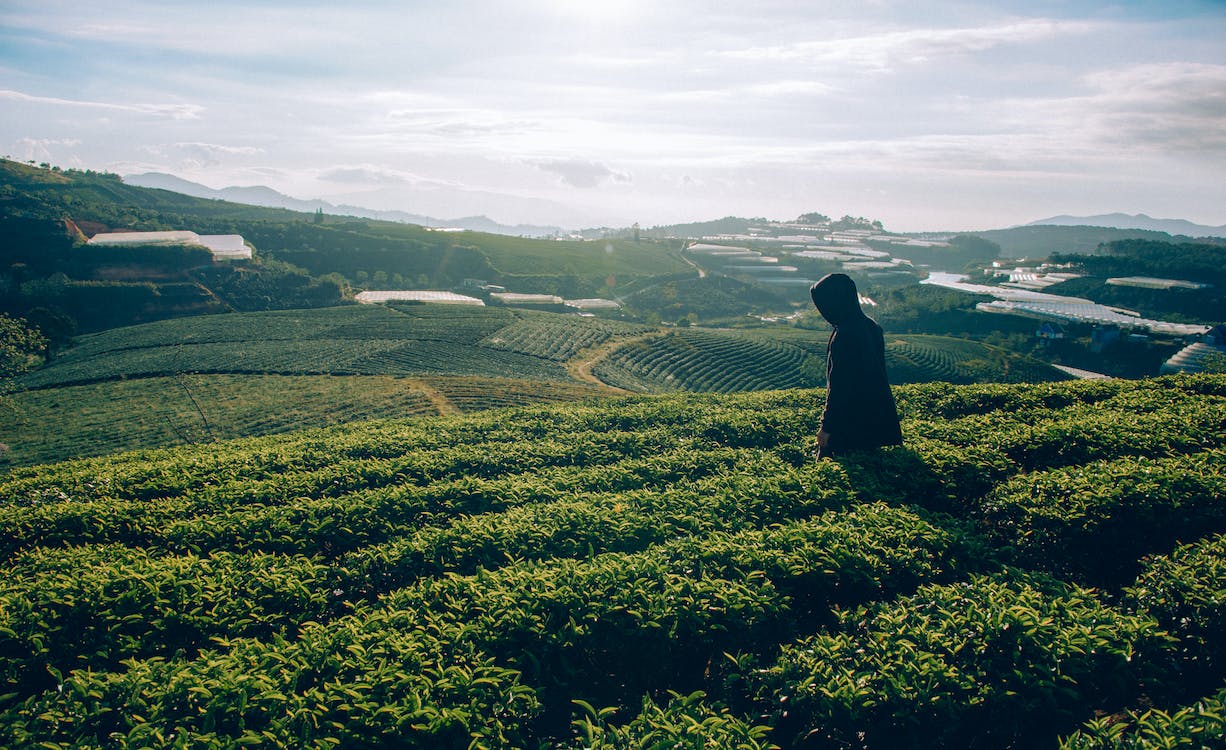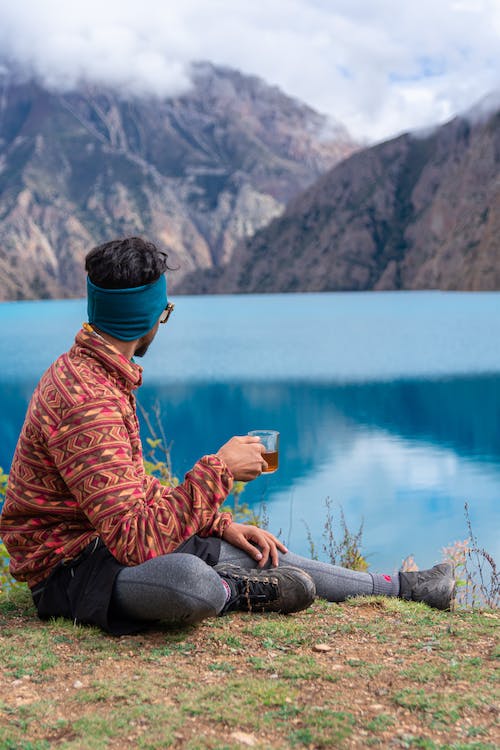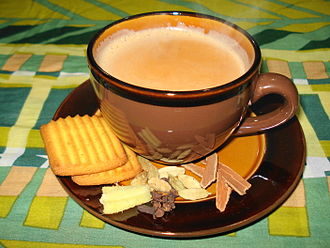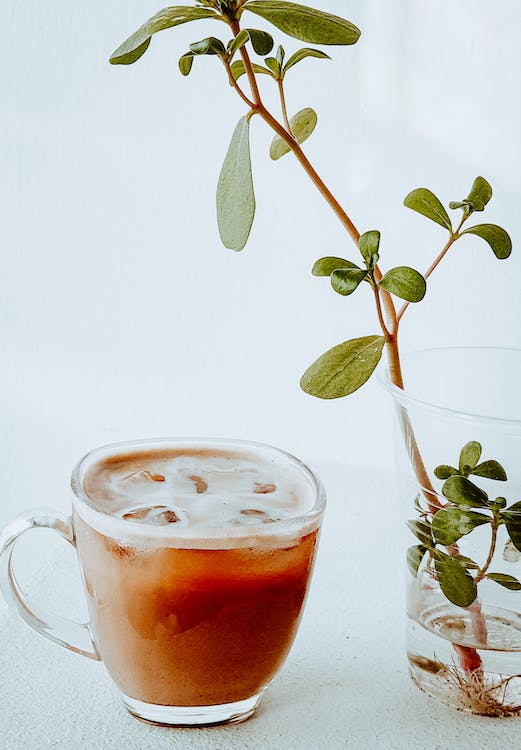With more than 900,000 tonnes produced annually, India is the second-largest tea grower in the world. To break the Chinese production monopoly, the British brought tea to India in the nineteenth century. The first location to be planted was the mountainous terrain surrounding the Himalayan foothill city of Darjeeling in the 1850s.
Then, on the Assamese plains, tea farming began to expand. A wild species of tea was discovered here and cultivated. This type was closely linked to the English-imported Chinese tea plant, Camellia sinensis assamica. It thrived best on the lowlands, as opposed to the altitude that the Chinese Camellia favored, and had bigger leaves than its Chinese equivalent.
The British finally established tea plantations in the hilly region of India’s southern tip, including the well-known Nilgiri massif, in the late nineteenth century. Nilgiri is short for “Blue Mountain.” Some claim that the mountain’s blue sheen is caused by the fog that surrounds it.
History
Despite producing more tea than any other country in the world, more than 70% of the tea India produces is consumed there. The Indian tea business has developed into one of the most technologically advanced tea industries in the world, and it now owns several international tea brands. The Tea Board of India is in charge of overseeing tea production, certification, exports, and all other aspects of the country’s tea industry.
Indians have been known to drink the natural tea plants of the Assam forests since at least 750 BC, according to historical sources. However, tea was first more frequently used as a component in cooking than as a beverage. The Dutch explorer Jogn Hughen von Linschoten observed that Indian chefs would prepare tea leaves with garlic and oil as a popular vegetable dish in addition to boiling the leaves to create a drink.
India started producing tea commercially in the 19th century to suit the demand for the beverage throughout the British Empire. British traders decided to cultivate tea in colonial India out of caution of excessive trade with China. The British Raj administrators realized that inexpensive Chinese sinensis teas were not the best choice for the area when a Singhpo ruler named Bisa Gam introduced Robert Bruce to Indian tea in 1823.
The British started using the locals after spying on Chinese tea productions (with Robert Fortune “acquiring” 20,000 seedlings and 85 laborers in 1848).
Large areas of the forest were cleared in Assam, Nilgiri, and Darjeeling for the cultivation of tea as the British created plantations to offer an affordable alternative to pricey Chinese tea. The Empire took some time to acquire a taste for the Assam tea they considered inferior, but preferences quickly evolved. Even in the United States, which is not known for its propensity for drinking tea, more Indian than Chinese tea was being ingested by 1887.
The history of tea in India begins with the beverage that Indians call chai, even though the vast tea estates of today are a product of the British Empire’s voracious want for tea.
How Drinking Tea Became a Tradition in India
Some people think that tea’s commercialization began in the era of British India. However, the evidence shows that tea consumption dates to at least 750 BC in India. It was not as marketed back then as it is now. Monks and saints were the main users, who relied on them to remain vigilant. Later, it was utilized for its therapeutic qualities, much like Indian herbal tea.
The royals and aristocrats eventually started to consume it. Commercial consumption did not start until the British conquest of India. Indians began consuming a lot of tea because of their addiction. It was a pivotal moment in the history of tea in India. India is currently both the world’s second-largest producer and consumer of tea.
The discovery of tea, according to a tale, was significantly different from the one involving the Chinese emperor. This specific mythology originated roughly 2000 years ago.
A monk decides to devote seven years to meditation and prayer. This monk subsequently developed Zen Buddhism. He was ready to nod off in the sixth year. He grabbed some leaves from the adjacent bushes and ate them out of hatred. All that was here were tea leaves. He chewed them anytime he felt sleepy, which helped him remain awake. He was able to honor his promise as a result. A few monks then drank tea to keep awake for exercise and prayer.
Later, locals started brewing and consuming it. Thus started the tea’s protracted voyage. At the time of the East India Company, tea farming in areas like Nilgiri, Assam, and Darjeeling transitioned to mass manufacturing.
India’s border is home to several prosperous tea farms. Darjeeling black tea is one of those, and it is known for its distinct flavor all over the world. Due to the enormous cultural diversity of Indians, tea is served in a variety of combinations, including hot or cold, with or without milk or sugar. The current craze in India is herbal tea, which is chosen by those who are concerned about their health.
However, many Indians in the public enjoy their tea with milk and sugar. Tea finds its place with respect and dignity, whether it is in a corporate board meeting or a roadside tea shop. After water, it is the most popular beverage.
Different Types of Tea in India
In many Indian houses, the family gathers every afternoon for a cup of steaming chai (tea), maybe accompanied by one or two biscuits. Ordinary beverage has a special quality. Check out the many varieties of Indian tea.
One of the oldest drinks that humanity has ever been given is tea! The dried leaves are soaked in water to prepare them. Tea is currently the second most consumed beverage in the world, behind water, with more than 3000 different types. It should come as no surprise that India, which is also the second-largest exporter of tea, topped the list of nations with the highest tea consumption.
1. Masala Chai
India is the world’s largest exporter of tea. Although tea trees are native to portions of north-western India, it was not until the British started growing them that they became a staple in every family. Due to India’s rich cultural diversity, natives developed the tea known today as masala chai, which consists of black tea that has been cooked with milk, sugar, and flavorful spices like ginger, clove, cardamom, and cinnamon. Every Indian family has a unique recipe for it.
2. Assam Tea
As the name implies, Assam tea is a kind of black tea that is indigenous to Assam. This variety of Indian tea is well-known for its potent malt flavor and briskness and is favored not just in India but across the world. Assam tea improves mental clarity and protects against several malignancies, including lung and ovarian.
3. Green Tea
Green tea is not only beneficial, but it is also cooling. To make fragrant or flavored teas, certain loose green teas are combined with fruits or perfumed with flowers. Pure green tea has a crisp flavor and the power to quickly improve your spirits. Green tea, which is regarded as the healthiest beverage on the globe, is packed with minerals and antioxidants that have a significant impact on the body.
4. Butter Tea
Butter tea, commonly referred to as Gur Gur Chai, is well-liked in Sikkim and Ladakh. Traditionally, tea leaves, yak milk, butter, water, and salt were used to make it. More than 30 glasses are frequently consumed by Himalayan nomads each day! This tea is offered in little glasses that will leave you wanting more and is also available with cow butter.
5. Kashmiri Kahwa
The Kahwa is an unusual tea with bold flavors that has its roots in the Kashmiri valleys. Like other Kashmiri drinks, this one appears complicated but is easy to create. All you need is hot, boiling water, to which you should add cinnamon, saffron, cardamom, and dried rose petals. To make this mixture as strong as desired, green tea leaves must be added at the end. Silver almonds with honey can be used as garnish. The greatest time to drink this flavorful, creamy tea is during the winter.
6. Noon Chai
Noon Chai, also known as Sheer Chai, is a common Kashmiri tea recipe that is well noted for its bright pink color. This tea is often served with milk and salt and is prepared by steeping tea leaves with cardamom and baking soda until a brilliant pink color is obtained. Almonds, pistachios, and cinnamon are optional additions. Indian tea is one of its preferred varieties.
7. Nilgiri Tea
The southern Western Ghats are the source of Nilgiri tea, sometimes referred to as blue mountain tea. Due to its intense scent, flavor, and black appearance, this tea is one of the most sought-after around the globe. Iced Nilgiri tea also has a wonderful flavor. Additionally, it has advantages for battling diabetes, losing weight, and enhancing dental health.
8. Darjeeling Tea
It is uncommon to not be familiar with Darjeeling tea. This variety of tea is widely consumed both among Indians and people from other countries. It comes in a wide range of variations, including white, black, green, and oolong. Darjeeling tea generally has a strong fragrant scent and is thin-bodied, which makes it mellow and mild. Additionally, it assists in preventing obesity and stomach ulcers.
Conclusion
Tea has a rich history in India going back hundreds of years. Widely influenced by the British and colonization its now a popular drink with rich traditions in India.




